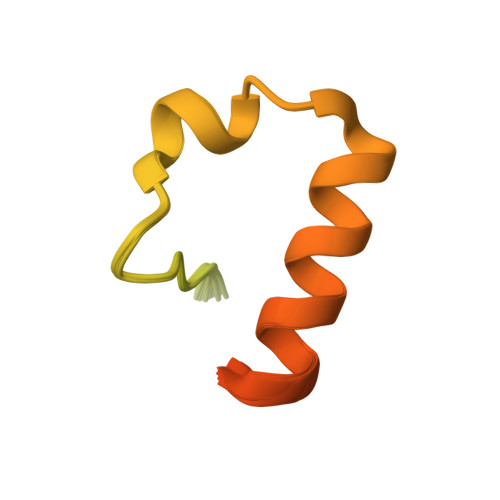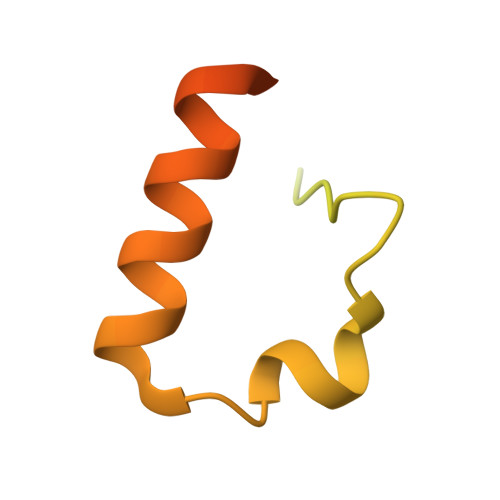Unconventional Ubiquitin Recognition by the Ubiquitin-Binding Motif within the Y Family DNA Polymerases iota and Rev1.
Bomar, M.G., D'Souza, S., Bienko, M., Dikic, I., Walker, G.C., Zhou, P.(2010) Mol Cell 37: 408-417
- PubMed: 20159559
- DOI: https://doi.org/10.1016/j.molcel.2009.12.038
- Primary Citation of Related Structures:
2KHU - PubMed Abstract:
Translesion synthesis is an essential cell survival strategy to promote replication after DNA damage. The accumulation of Y family polymerases (pol) iota and Rev1 at the stalled replication machinery is mediated by the ubiquitin-binding motifs (UBMs) of the polymerases and enhanced by PCNA monoubiquitination. We report the solution structures of the C-terminal UBM of human pol iota and its complex with ubiquitin. Distinct from other ubiquitin-binding domains, the UBM binds to the hydrophobic surface of ubiquitin centered at L8. Accordingly, mutation of L8A, but not I44A, of ubiquitin abolishes UBM binding. Human pol iota contains two functional UBMs, both contributing to replication foci formation. In contrast, only the second UBM of Saccharomyces cerevisiae Rev1 binds to ubiquitin and is essential for Rev1-dependent cell survival and mutagenesis. Point mutations disrupting the UBM-ubiquitin interaction also impair the accumulation of pol iota in replication foci and Rev1-mediated DNA damage tolerance in vivo.
Organizational Affiliation:
Department of Biochemistry, Duke University Medical Center, Durham, NC 27710, USA.
















